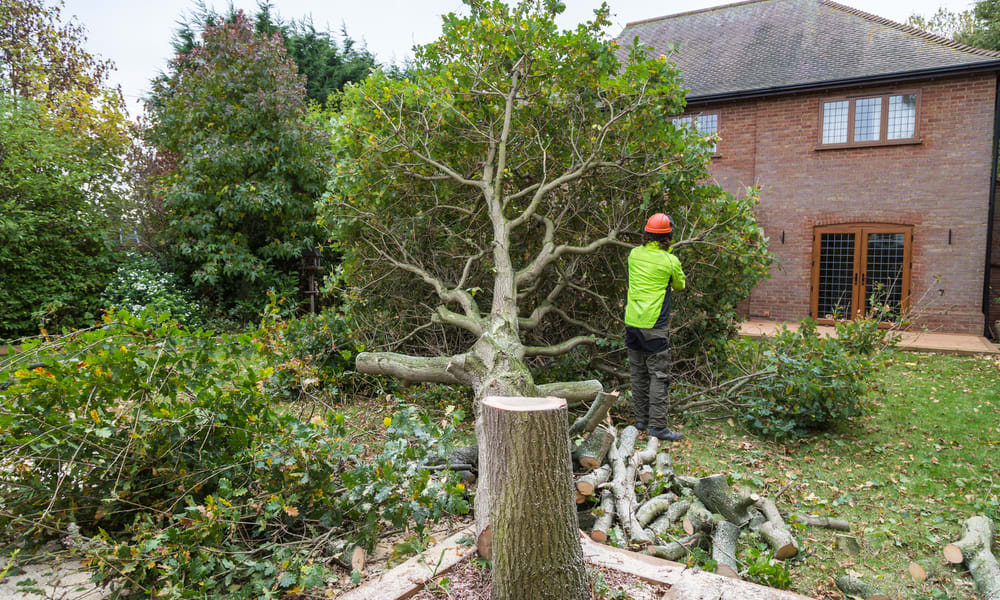Tree Services: Protecting Seniors Through Safe Property Management
As we age, maintaining our property becomes increasingly challenging, and trees that once provided beauty and shade can transform into potential hazards. For older adults, understanding when and why tree removal becomes necessary isn't just about aesthetics—it's about creating a safer living environment that supports independence and peace of mind.

Why Tree Removal Can Be a Safety Issue for Older Adults
Aging brings natural changes in mobility, vision, and reaction time, making older adults particularly vulnerable to tree-related accidents. Dead or dying trees pose significant risks through falling branches or complete tree failure, especially during storms. For seniors with limited mobility, navigating around low-hanging branches, surface roots, or fallen debris becomes increasingly difficult and dangerous.
The consequences of tree-related injuries can be particularly severe for older adults, potentially leading to fractures, head injuries, or complications that affect their ability to live independently. Additionally, overgrown trees can block natural light, create damp conditions that promote mold growth, or provide pathways for pests to enter the home—all factors that can impact health and safety.
Signs It’s Time to Remove a Tree Near Your Home
Recognizing warning signs early can prevent dangerous situations. Dead or dying trees exhibit several telltale symptoms: leaves that don’t return in spring, bark that’s falling off or showing signs of disease, and branches that appear brittle or hollow. Fungal growth around the base of the tree often indicates internal rot, while cracks in the trunk suggest structural weakness.
Other critical warning signs include trees that lean significantly, especially if the lean has developed recently, and root damage from construction or severe weather. Trees with extensive storm damage, those growing too close to power lines, or specimens that have outgrown their space and threaten structures should also be evaluated for removal. If you notice increased pest activity or if the tree is dropping excessive amounts of debris, these may also indicate it’s time for professional assessment.
Affordable Tree Services Geared Toward Seniors
Many tree service companies recognize the unique needs and financial constraints that seniors face, offering specialized programs and discounts. Some companies provide senior discounts ranging from 10-15% off standard rates, while others offer payment plans that make large tree removal projects more manageable on fixed incomes.
Community-based services often provide the most affordable options for seniors. Local tree care cooperatives, seasonal workers, and smaller family-owned businesses frequently offer competitive rates compared to large national chains. Some services also provide bundled packages that include multiple trees or combine removal with other yard maintenance services, reducing overall costs.
Programs That Help Cover the Cost of Tree Removal
Several assistance programs can help seniors manage tree removal costs. The USDA Rural Development program occasionally offers grants for rural property improvements that include hazardous tree removal. Some utility companies provide free tree removal services when trees threaten power lines or infrastructure.
Local emergency management agencies sometimes offer post-storm cleanup assistance, including tree removal for seniors and disabled residents. Additionally, some municipalities have hardship programs that provide tree services for low-income elderly residents, particularly when trees pose immediate safety hazards. Veterans may qualify for specialized assistance through certain VA programs or veteran service organizations that provide home maintenance support.
Local Agencies That Offer Yard Help for Seniors
| Agency Type | Services Offered | Typical Cost Range |
|---|---|---|
| Area Agencies on Aging | Referral services, volunteer programs | Free - $50/hour |
| Faith-based Organizations | Volunteer yard work, emergency tree service | Free - Donation based |
| Senior Corps Programs | Regular maintenance, minor tree work | Free |
| Local Government Services | Hazardous tree removal, emergency response | $200-$800 per tree |
| Community Service Groups | Volunteer assistance, coordination with professionals | Free - $300 per project |
Prices, rates, or cost estimates mentioned in this article are based on the latest available information but may change over time. Independent research is advised before making financial decisions.
Many communities have established networks specifically designed to help seniors maintain their properties safely. Area Agencies on Aging often maintain lists of vetted, affordable service providers and may coordinate volunteer programs where younger community members assist with yard work. Faith-based organizations frequently organize service projects that include tree maintenance and removal for elderly congregation members and community residents.
Senior Corps programs, including the Senior Companion Program and Foster Grandparent Program, sometimes extend their services to include property maintenance assistance. Local fire departments may also provide emergency tree removal services when trees pose immediate threats to homes or public safety.
Tree maintenance and removal shouldn’t become overwhelming concerns that compromise safety or independence. By understanding the risks, recognizing warning signs, and knowing what resources are available, seniors can maintain safe, beautiful properties while managing costs effectively. The key is being proactive—addressing potential tree hazards before they become emergencies, and reaching out to community resources that can provide both assistance and peace of mind.




